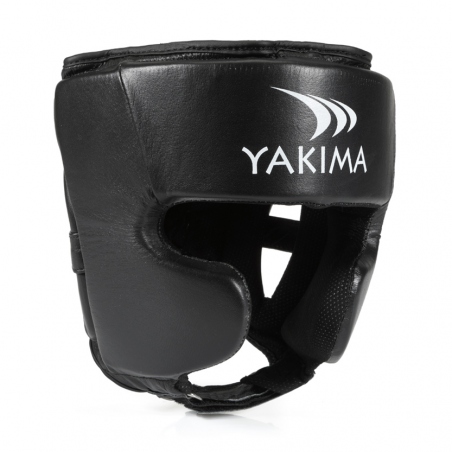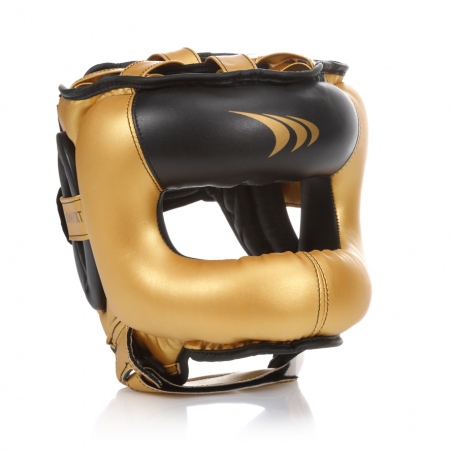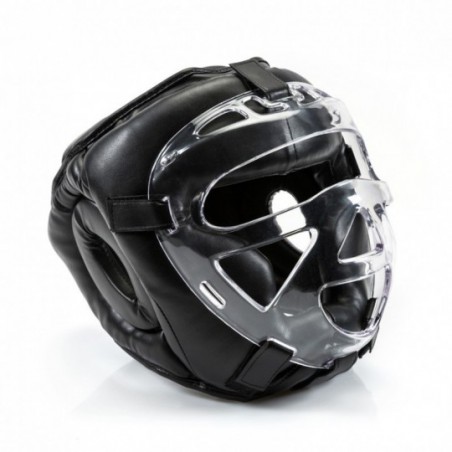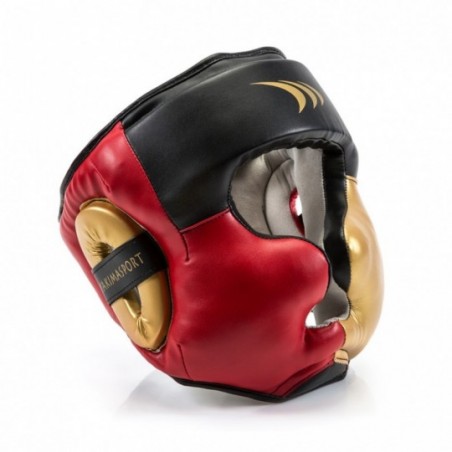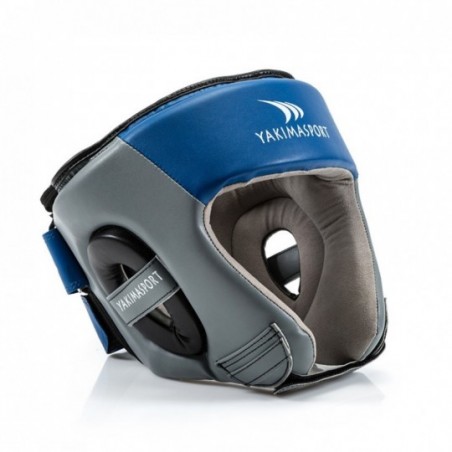Boxing helmets
Are you training boxing or about to embark on a combat sports adventure? Then take a look at the accessories you need to guarantee injury-free training! At Yakimasport you will find, among other things, various models of comfortable boxing helmets.
Why is a boxing helmet important?
A boxing helmet reduces the risk of brain damage, head injuries or jaw injuries. During boxing, MMA and kickboxing training, the product significantly increases the safety of participants. It is necessary for use regardless of age - by children and adolescents as well as adults. Most models of helmets are open, meaning they protect the skull, cheekbones and chin strap. It is also possible to choose a built-in variant of the helmet which also protects the nose. When choosing a model, it is important to ensure that it does not stick to the skin, minimises the force of blows and does not slip off. A boxing helmet protects the face, but does not guarantee protection against concussions.
Types of boxing helmets
If you are considering choosing the right type of boxing helmet, check out the most common models. New types of products are constantly appearing on the market, but among the most popular ones are:
-
sparring helmet - has an enclosure for the cheeks, head, ears and chin. However, it does not have a nose guard. It effectively protects the head but allows you to take blows to the face.
-
Tournament boxing helmet - this is a completely uncovered model. Only the head remains encased, while the cheeks, chin and nose are exposed.
-
Grille helmet - is a combination of sparring helmets with a metal grille placed in front of the face. It protects the face from impact, but unfortunately minimises visibility.
-
helmet with mask - rarely used in boxing, it has a transparent plastic mask with holes instead of a grille.
-
boxing helmet with nose guard - this model has a strip of cushioning material located around the nose. Fastens under the chin.
-
helmet with nose and jaw protection - this protects almost the entire head from injury and is similar to motorbike helmets created from foam.
How do you choose the right size of boxing helmet?
If you want to best protect your health during boxing training and fights, you need to choose a helmet carefully to fit your head. It should fit snugly to your head and not move around, as you will then expose yourself to injury and your actions will be uncomfortable. Often a buckle located on the top of the head or occipital area is used to adjust the size of the helmet. The accessory should be adjusted accordingly for the junior, lower weight and heavyweight fighter.
Which helmet for boxing and which for MMA?
The right helmet is the one suited to the discipline being trained. A person developing his or her skills in boxing or muay thai, which are high impact sports, should get an enclosed, thick helmet to minimise the force of impact.
For MMA - a sport with far fewer strikes - a lighter, less enclosed helmet should be selected. During MMA training, it is more important that the helmet fits snugly on the head and is comfortable to wear. This is because a training helmet should not interfere with wrestling and ground fighting exercises. The product must primarily protect the sensitive parts of the head, such as the forehead, chin and cheeks. The back of an MMA helmet can be more exposed.
What else to look out for when choosing a boxing helmet?
When buying a boxing helmet, there are a number of things to consider, such as:
-
Adequate inner layer - this ensures that the person training does not feel the full force of the blows and shocks. The padding is usually gel, foam or composed of several layers made of advanced and patented technologies. To better protect the head, it is worth opting for a gel or multi-layer layer. These protect more effectively than foam.
-
The right visibility - the right helmet is one that has large openings at the eyes to guarantee the best possible visibility. At the same time, the model should protect the nose and eye sockets.
-
The right fit - it is also important to use the right type of fit, so that the helmet does not pinch and at the same time does not slip. Many helmets are produced as all-purpose models - but this does not mean that you should not adapt them to your own head and opt for the appropriate fastening in the form of Velcro or strings.
-
Hygiene - a boxing helmet should also provide the best possible ventilation during training and fights. Therefore, it should be equipped with ventilated panels and comfortable padding, so that the trainee does not fear the sweat that appears during fierce encounters with rivals.
Choose the right boxing helmet for you and start training in complete safety and effectiveness!
 Polski
Polski Čeština
Čeština Русский
Русский English
English Slovak
Slovak Hrvatski
Hrvatski Română
Română Українська
Українська Deutsh
Deutsh Magyar
Magyar Lietuvis
Lietuvis





